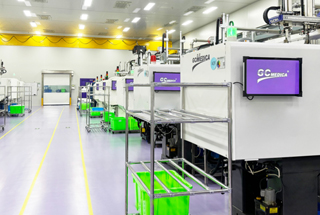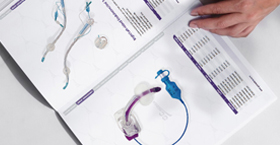Maintaining normothermia during surgical procedures is vital to prevent complications such as increased blood loss, surgical site infections, and prolonged recovery times. Selecting an appropriate patient warming system is crucial for enhancing patient outcomes and ensuring safety. This article outlines key factors to consider when purchasing a patient warming system.
1. Safety Features
Patient safety is paramount when selecting a warming system. Essential safety features to look for include:
Temperature Control and Monitoring: The system should offer precise temperature settings and continuous monitoring to prevent overheating or underheating.
Overheat Protection: Built-in mechanisms that automatically shut off the device if it exceeds safe temperature limits.
Pressure Relief Mechanisms: Features that prevent pressure sores or burns from prolonged contact with warming elements.
Ensuring these safety features are present can minimize risks associated with thermal injury and enhance patient comfort.
2. Efficiency and Effectiveness
An effective warming system should maintain the patient's core temperature throughout the perioperative period. Considerations include:
Warming Method: Evaluate the different technologies available, such as forced-air warming, conductive warming, and fluid warming systems. Each method has its advantages and suitability depending on the clinical scenario.
Speed of Warming: The system should quickly reach and maintain the desired temperature to reduce the risk of hypothermia.
Coverage Area: Assess how much of the patient's body the system can effectively warm, as greater coverage can lead to better temperature management.
Selecting a system with proven efficiency can lead to better patient outcomes and streamlined surgical procedures.
3. Patient Comfort
Comfort is a critical aspect of patient care. Features that enhance comfort include:
Noise Levels: Systems with low operational noise contribute to a more comfortable environment for patients.
Material Quality: Soft, hypoallergenic materials can prevent skin irritation and enhance the patient's overall experience.
Design and Fit: Warming devices should conform to the patient's body and surgical position without causing discomfort or hindering the procedure.
Prioritizing patient comfort can also reduce anxiety and improve cooperation during medical procedures.
4. Ease of Use and Mobility
A user-friendly system can improve efficiency in clinical settings. Consider:
Intuitive Controls: Simple interfaces with clear instructions can reduce the likelihood of user error.
Portability: Lightweight and mobile units allow for easy transport between different areas of the healthcare facility.
Setup and Maintenance: Systems that are easy to assemble, clean, and maintain can save time and reduce workload for healthcare staff.
Ease of use ensures that staff can operate the system effectively, leading to better patient care.
5. Cost and Budget Considerations
While quality should not be compromised, it's important to consider the financial aspects:
Initial Investment: Compare the upfront costs of different systems and what is included in the purchase.
Disposable vs. Reusable Components: Evaluate the ongoing costs associated with disposable items versus the durability of reusable parts.
Energy Efficiency: Systems that consume less power can reduce operational costs over time.
Balancing cost with features and benefits ensures a wise investment that meets both clinical and financial objectives.
6. Compatibility with Existing Equipment
Ensure that the warming system integrates seamlessly with your current medical equipment and practices. Compatibility reduces the need for additional investments and training.
7. Regulatory Compliance and Standards
Verify that the system complies with relevant health and safety regulations and standards. Compliance ensures that the device meets established safety and performance criteria.
8. Vendor Support and Warranty
Consider the level of support provided by the manufacturer, including:
Training and Education: Availability of resources to train staff on proper use and maintenance.
Customer Service: Responsive support for troubleshooting and inquiries.
Warranty Terms: Comprehensive warranty coverage can protect your investment and provide peace of mind.
Strong vendor support can enhance the overall value and longevity of the patient warming system.
Conclusion
Selecting the right patient warming system requires careful evaluation of safety features, efficiency, patient comfort, ease of use, cost, compatibility, regulatory compliance, and vendor support. By thoroughly assessing these factors, healthcare facilities can make informed decisions that enhance patient care and optimize operational effectiveness.


 Français
Français Español
Español Products
Products

 About Us
About Us












